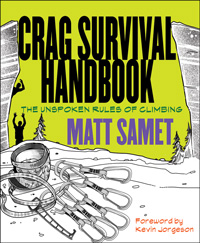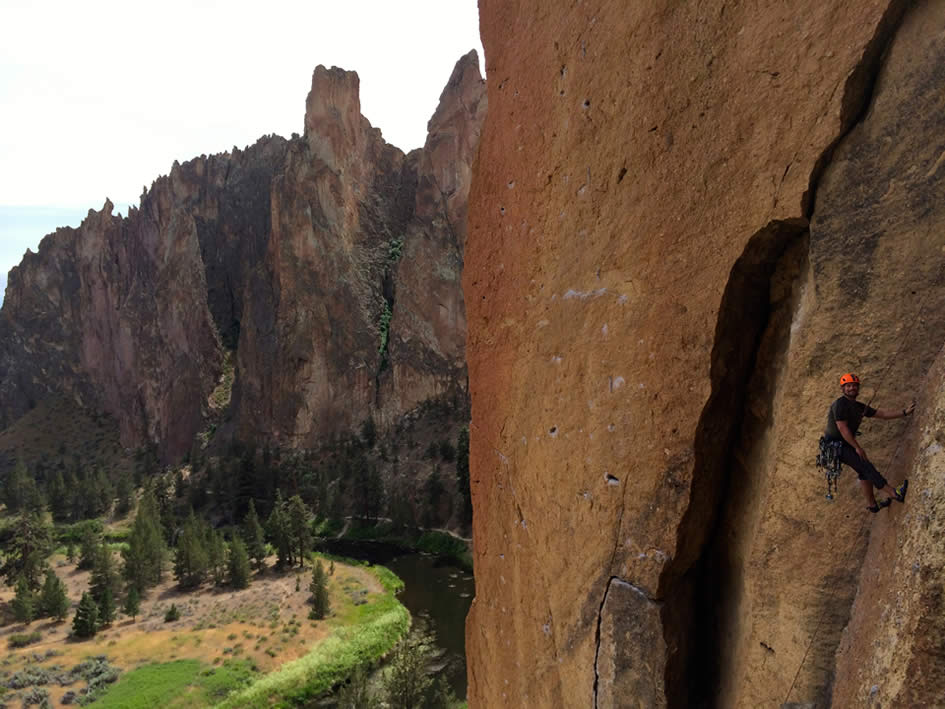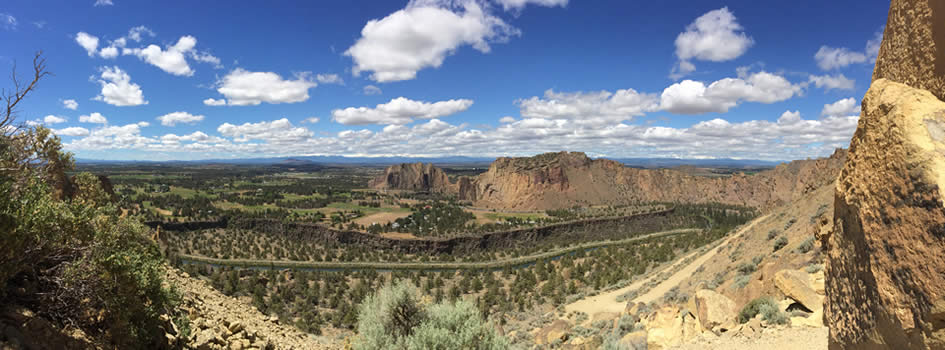Posted on January 9, 2015
This spring I was introduced to a book called Crag Survival Guide: The Unspoken Rules of Climbing, written by Matt Samet, and began to think more on the basics of introducing people to the sport of climbing. In the past, most new climbers learned from mentors. Today, with the explosion of popularity in the sport, many more are introduced through their local climbing gym or by receiving instruction from a guide at a nearby crag.
I briefly described the different methods of 'learning the ropes' in my previous column when discussing how climbers that have no medical or guide training best prepare themselves to avoid mistakes. The areas of focus I mentioned included instruction by a certified American Mountain Guide Association (AMGA) guide, attendance in a wilderness medicine course, and reading climbing related books and literature to pick up on tips and techniques to practice the sport in a safe manner.
This last area of focus is where Samet's book fits so well. It is an all-encompassing single guide for the new climber to learn the basics of the sport – from safety, to etiquette, to movement – and even includes chapters on 'becoming a rock ninja,' (AKA tips on successful climbing strategies), and how to care for your gear and assess it for damage. Matt's ability to describe somewhat mundane but necessary tasks with good humor makes the book a quick read. Even for the seasoned climber, there are tricks to pick up.

The Crag Survival Guide answers all of the common questions that I hear from clients when I am guiding:
"Do bolts ever break?"
"How does a GriGri work?"
"How tight should my shoes be?"
"How do I clip a quickdraw?"
"What material is used to make a climbing rope?"
All of the information is presented in one nice well-written and humorous package with pictures that explain some of the more complicated information for the new climber. So if you have a friend or relative who is interested in learning more about rock climbing and trying it out, I highly recommend this book to help them avoid the common mistakes that get people hurt or the bad habits that can lead to complacency and injury in the future.
Complacency and Injury
That brings up another very important point. The common things can sometimes be forgotten. That is why in climbing we emphasize redundancy and double-checking the common tasks every time.

It is often the easy and everyday tasks that get overlooked and cause accidents in the mountains. Almost every climber has heard some portion of the story about Lynn Hill, one of the best female climbers in the history of the sport, failing to complete her knot just before an easy warm up in Buoux, France. She easily completed the climb and at the anchors weighted the rope, only to realize that she did not finish tying her knot. She fell 75 feet, luckily escaping serious injury or death.
You must always check yourself and your belayer. It is routine and easy to forget, but it is essential to ensure that your harness and your belayer's harness are correctly fastened, that all knots are completed and dressed appropriately, and that all systems are closed (a knot in the end of the rope and all locking carabiners are locked).
Two recent close calls raised my heart rate but are perfect examples of why we check every thing, every time.
A friend and I had just completed a five-pitch climb and were in the process of rappelling to the ground when, during our routine checks, I noticed that he had failed to put his locking carabiner through both ends of a sling that he had rigged to extend his ATC prior to rappelling. It was raining hard, we were cold, and we were hurrying. He was nowhere near ready to use it, but the one length had fallen as he clipped through without his noticing. By double-checking each other before using a newly rigged system, we averted an accident.
While taking clients climbing in July, I instructed them to insure that they always thread their rope through both their upper and lower hard points in their harness. All of the climbers had some experience and had performed the task (a portion of tying a figure-8 follow thru) perfectly throughout the day. One young man, after taking a break for a bite to eat and some water, tossed his shoes on and tied in. We conducted the checks and I caught the mistake. He had only tied into the top hard point, and from his vantage point looking down, the knot seemed correct. Again, not even a close call, but these types of mistakes on common tasks injure people every year.

A quick review of the 2013 edition of Accidents in North American Mountaineering revealed no less than six incidents of climbers rappelling off the end of ropes and two incidents that involved the end of a rope feeding through the belay device while lowering. These accidents could have been avoided by closing the system with a stopper knot at the end of the ropes.
Those examples are just the accidents that get reported, either by people involved in the situation, incidents posted on popular climbing forums such as Mountain Project, or filed by local rescue groups or a national or state agency. I am sure there are many more that occur and are never reported.
Complacency and injury often go hand in hand. There are many uncontrollable events that happen in the mountains that we have cannot control. What we can control, and what we must control, are the unforced errors due to lack of vigilance to the common-but-essential tasks that form a basis for our climbing passion.
Posted on January 11, 2015